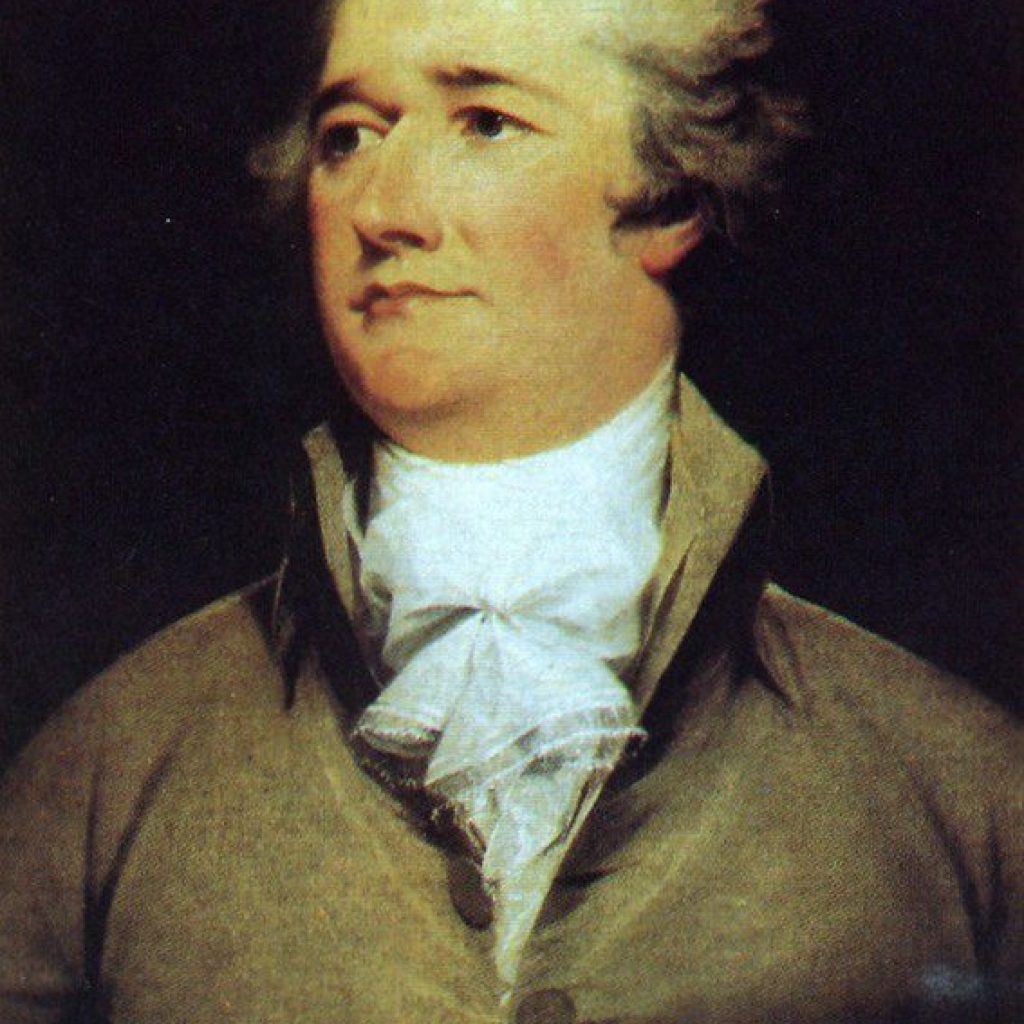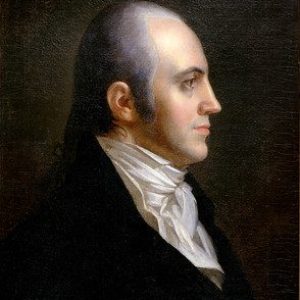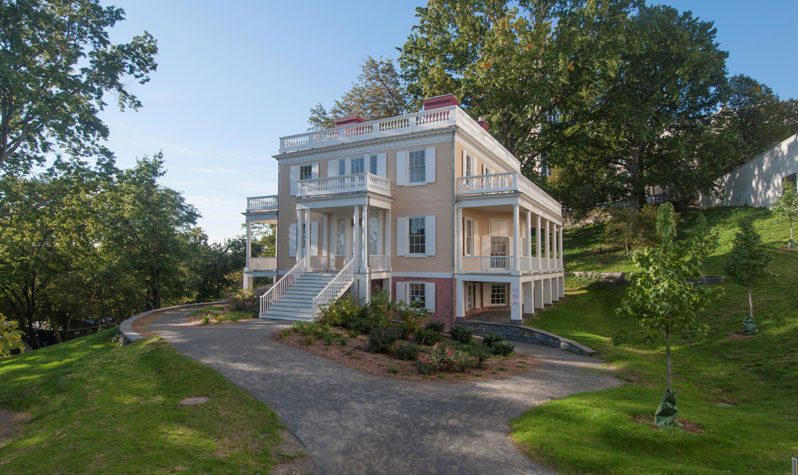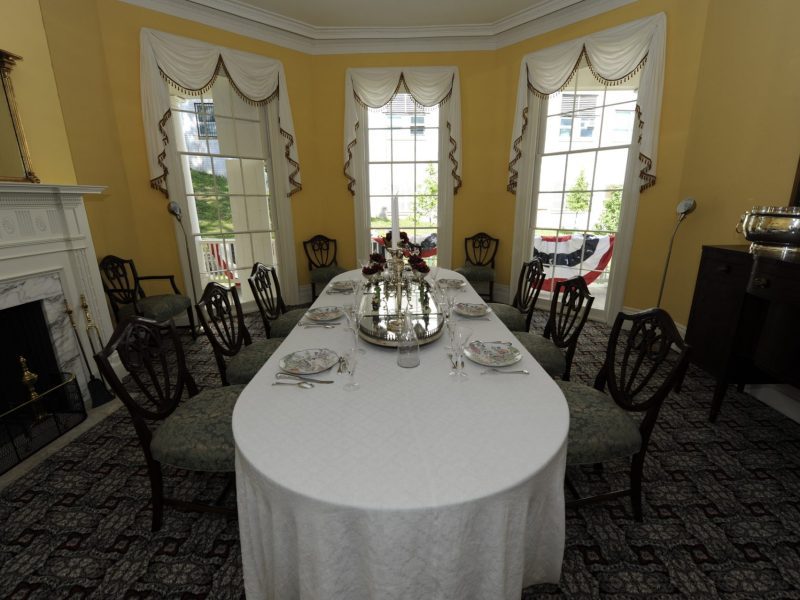
New York City
Alexander Hamilton’s story could be described as the ultimate American story in many ways. He was not born rich. He was not even born in the United States. His story is one of an immigrant, born out of wedlock, abandoned by a deadbeat dad, and who still managed to rise up and get his image engraved on the $10 bill and earn the name “Founding Father.”
Alexander Hamilton is known to us all as the face on the $10 bill. In America, you don’t have to be a President to earn the right to be memorialized in everyone’s wallet. He and Benjamin Franklin are the only two who are currently on U.S. currency, yet never served as president. His story has been told in books and on the stage, and it is one filled with honor. Even in death, his home, which he named “The Grange,” was rescued with honor.
Our Founding Fathers were men of many talents. Alexander Hamilton could do it all. His list of accomplishments is astonishing in its depth. Is there anything this man couldn’t do (including a mighty fine rap song.)
- A constitutional lawyer
- Joined the Continental Army and rose from captain to become George Washington’s aide and secretary and actively led troops at the battle of Yorktown
- Delegate in the Continental Congress, helping form the new country and helped develop our current federal Constitution
- Congressman from New York
- Co-founded the first American political party – the Federalist party
- Signer of the U.S. Constitution
- Founded the New York Evening Post – now the New York Post
- The first Secretary of the United States Treasury
- Presided over the creation of the United States Mint
- Created the Revenue-Marine/Revenue Cutter – what would become the U.S. Coast Guard
- Founder of the Bank of New York
- With George Washington during the winter at Valley Forge
- Father of 8 children

Hamilton was born around 1756 at Charlestown, on the British island of Nevis in the West Indies. His parents were not married when he was born. His mother was a divorcee and thus not allowed to remarry. His father James Hamilton and his mother separated and the dad had little contact with his son Alexander – barely 10 years old. His mother died 2 years later. He began working as a clerk by the age of 11. Benefactors saw his intelligence, and managed to send him to school in the North American colonies where he attended Kings College – now Columbia University – in New York City. While in college, he became active in the revolutionary war movement, using his writing skills for political pamphlets. War broke out while he was in college and he chose to join the forces against his former King. The rest is history.
The Grange
Following his retirement around the age of 48, Hamilton purchased a 32 acre property in the countryside outside of the city and built a house he called “The Grange.” The house was the first and last home Hamilton ever owned. It is a very basic square house, with added porches on all sides. It was a gentleman’s country estate with views overlooking the Hudson River. This beautiful countryside getaway eventually became swallowed up in the ever growing Manhattan island sprawl and is now located in Harlem in uptown New York City.

The Aaron Burr Issue
During his career, there was plenty of debate on the direction the new government should go and how to get there. He was often in disagreement with Thomas Jefferson and Aaron Burr – members of what would become the second political party, the Democratic-Republicans. When there was a debate raging over which of those two men should be nominated for election, it was Hamilton’s arguments that he preferred Jefferson’s abilities to Aaron Burr’s that helped gain Jefferson’s nomination.
When Aaron Burr managed to defeat Hamilton’s father-in-law for the New York governor position, it further deepened the angst between the two men. Things came to a head in the early months of 1804 when what would be considered today as a gossip column piece ran in the Albany Register written by Charles Cooper. It referenced a conversation between Hamilton and other dinner guests in which Hamilton mentioned that Burr is a “dangerous man, and not to be trusted.” Aaron Burr read the gossip piece, and wrote Hamilton demanding an explanation and an apology. After the exchange of a few more letters, Burr challenged Hamilton to a duel as a matter of personal honor.
Today, it is hard to imagine a sitting vice-president shooting a former cabinet member all in the name of “honor.” Dueling as a practice was on the way out of fashion and was outlawed in New York and New Jersey. The penalties for dueling were less likely to be prosecuted in New Jersey, and so the two parties selected their “seconds,” enlisted a doctor to join them, and rowed across the Hudson River to Weehawken, New Jersey on July 11, 1804. On the same field where Hamilton’s eldest son had died in a duel defending his father’s honor just two years prior, Hamilton now stood. Hamilton had prepared for the duel, writing goodbye letters to his wife and making lists of all his debts. He told his aide that he had a great distaste for dueling and the thought of taking a life, and so he planned to shoot wide and not try to actually hit Burr. Although the details are still unclear, the results of the duel were that two shots were fired. Hamilton’s shot landed in a nearby tree. Burr’s shot landed in Hamilton’s abdomen. They managed to get the wounded Hamilton back to Manhattan on what must have been a miserable trip and take him to a friend’s house. A message was taken to Hamilton’s wife and children, who were able to make it in time to say their goodbyes to Hamilton before he passed away. Aaron Burr returned to New York City expecting a hero’s welcome, and instead found himself facing people outraged over the death of Hamilton as well as possible murder charges. He fled to the south until the charges were eventually dropped. He was later tried for treason as he attempted to lead the areas around the Louisiana Purchase to secede from the Union, was put on trial, but got off on a technicality. His reputation never recovered.
Honorable Friends
As then as much as today in times of tragedy, true friends rallied to support Hamilton’s family. His list of debts were extensive as he had only recently finished building The Grange just two years prior. Friends took up subscriptions to raise money to help the family. They purchased the Grange from his widow for $40,000 then sold it back to her for just $20,000, enabling her to remain in the house for many years to come.
In a bit of irony, the Burr and Hamilton families were intertwined again when Aaron Burr married a woman who lived just one mile north of the Grange. Long after Burr had fallen from grace, he married Eliza Jumel, a socialite who owned what is now known as the Morris-Jummel House. The two-story mansion had briefly served as Washington’s headquarters during the Revolution and later hosted his first cabinet meeting after he became president. But now it was the home of the man who killed one of most important men in the United States. When Eliza decided to divorce Burr just 3 years after their marriage, she used Alexander Hamilton’s son as a divorce attorney. That must have been a slight sweet revenge for the family. Aaron Burr died of a stroke on the same day the divorce was finalized. Lin-Manuel Miranda found inspiration for Hamilton the musical, in the Morris-Jumel Mansion. He wrote portions of songs “Wait for it” and “The Room Where it Happens” in Aaron Burr’s actual bedroom at the Morris-Jumel Mansion.
You can visit several sites related to Alexander Hamilton and the Founding Fathers in the New York City area, including touring The Grange, the Morris-Jummel House, as well as the burial spot of Alexander Hamilton at Trinity Church in lower Manhattan. You may also want to visit Fraunces Tavern, a favorite spot for the Founding Fathers to meet, and the location where in 1783 George Washington said goodbye to his officers before returning to his home in Mount Vernon following his successful term of service. Near the Grange, is another home Hamilton frequented, Gracie Mansion. Hamilton used the same architect and builder for his own home. Now the residence of the New York City mayor, Gracie Mansion is open for tours and where you can see the fireplace that was originally in the room where Alexander Hamilton died. The fireplace was moved to Gracie Mansion in 1966 and now sits as a centerpiece of the Susan B. Wagner Room where the mayor holds press conferences and social gatherings.
The city is full of fascinating history for the American history buff, and if you visit The Grange, hopefully you can manage to get tickets to see the musical on Broadway while you’re in town too.
Spend a few extra days visiting the city prior to a cruise that travels up the Hudson River round trip out of New York City:
Canada & East Coast Explorer
Toronto, ON to Ft. Lauderdale, FL
- 15 Nights
- September 22, 2025,September 29, 2025
- From $10,495
- Viking Octantis
Hudson River Fall Foliage – American Independence
New York City, NY to Albany, NY
- 7 Nights
- October 6, 2025,October 13, 2025,October 20, 2025--
1 more date available. - From $5,870
- American Independence





